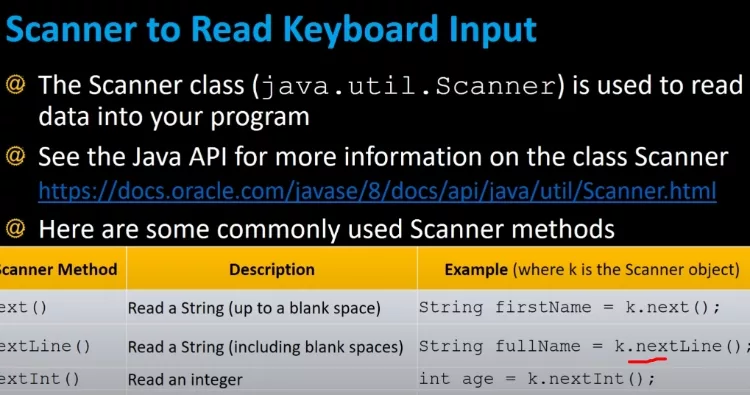The Scanner class has a variety of methods that can be used to read different types of data. One such method is the next() method which reads an int. The extent() method is also one of the easiest ways to read integers with Java without any confusion or errors. This article will teach you how to use this method in your code and what it does for you so you can start using it too.
Scanner class methods can be used to read many different types of data, but which one reads an int? This blog post will explore the Scanner class and its various methods. It will also answer the question "which scanner class method reads an int?" and give a step-by-step tutorial on how to use this scanning technique for your next programming assignment.
Contents

You may have heard of an int Scanner, but you don't know what it is or how to make one. This blog post will teach you everything you need to know about the function and give instructions on how to use one.
First we will discuss what a scanner is and then we will go into detail about different types of scanners that are used in programming languages such as Java, C++, Python and Ruby. Finally we will show how easy it is for beginners like yourself to read an int scanner using the Swift language.
has the Scanner class to help you read in data from standard input. There are many methods that can be used to test whether an input is an integer, one of which is hasNextInt(). This method returns true if there's another integer available for reading. It then advances the position pointer by two bytes and sets the value of the next byte to 0xFF. If it returns false, it indicates that there was not another integer available for reading so it should return false instead.
Some changes to the Scanner class in Java 8. There are two methods that test whether the next input is an integer: hasNextInt() and hasNextLong(). This blog post will explore which of these two methods tests whether the next input is an integer, what each method does if it finds that there is no more data, and how they compare on performance.
Can we use two scanner in Java? Yes, but there are some limitations. We can only scan one file at a time and the scanners will go through all files until they find the first match. Let's take a look at how this works by scanning for "Hello World!" in both of these files: Hello World! and Goodbye world.
The first thing to note is that each scanner has its own queue, so when it reaches its end-of-file marker, it will start from the beginning again rather than move on to another file. This means that if our second file starts with "Goodbye world!", then we'll never see any output from it because once the first scanner hits its end.
Yes, we can use two scanner in Java. But it is not recommended because Scanner class is thread-safe and trying to get a scanner from one thread and using it on another will cause problems.
Scanner methods are a great way to read data. This blog post is going to cover which scanner method you should use for reading in a double as input. We will compare the Scanner class, using the while loop, and using a do-while loop. We will also discuss what each one does and when it might be best used.
It is often the case that when working with data, you are given a value that has to be converted in some way. For example, when reading an image file into your program, you need to convert it from raw bytes into pixels.
These conversions can happen by using one of two methods: by calling scan or by calling read. In this blog post, we will explore what these methods do and how they differ from each other so you can make sure to use them properly.
Scanner methods are a great way to read data. This blog post is going to cover which scanner method you should use for reading in a double as input.
Scanner class methods can be used to read many different types of data, but which one reads an int? This blog post will explore the Scanner class and its various methods. One such method is the next() method which reads an int.
 |
 |
 |
 |
 |
 |
 |
 |

About Dror Wettenstein
Dror Wettenstein is a software engineer and entrepreneur with more than 15 years of experience in the industry. He is the founder of TechTreeRepeat, a company that enables technical writers to publish their work faster and share it with readers across the globe. Dror has a master’s degree in computer science from San Diego State University and a bachelor’s degree in physics from UC Irvine.
When he’s not working on software projects, Dror enjoys writing articles and essays on various topics. He also likes playing guitar and spending time with his wife and two young children.
Check the FREE Gifts here. Or latest free books from our latest works.
Remove Ad block to reveal all the secrets. Once done, hit a button below
 |
 |
 |
 |